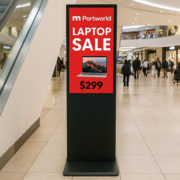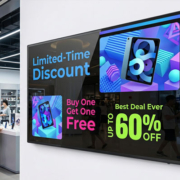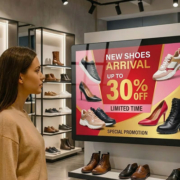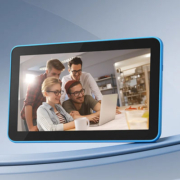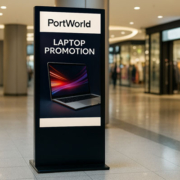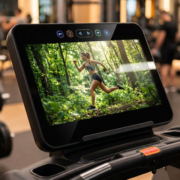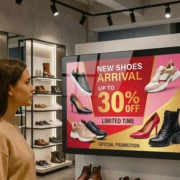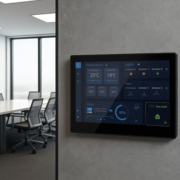How to Choose the Right Digital Signage Display?
Digital signage is everywhere—from retail stores and restaurants to corporate offices and public transportation hubs. But with so many options available, how do you choose the right digital signage display for your business or project?
Whether you’re a small business owner or an enterprise integrator, selecting the right display requires understanding your environment, your goals, and the features that truly matter.
Let’s explore the key factors—and how Portworld can help you make the right decision.
1. Define the Purpose and Application
Start by asking: What is the main objective of your digital signage?
- Retail: Promote products, show prices, highlight promotions.
- Corporate: Display internal communications, dashboards, or meeting schedules.
- Hospitality: Guide guests, display menus, advertise services.
- Transportation: Show schedules, alerts, or advertisements.
- Education or Government: Deliver announcements, timetables, or interactive kiosks.
Each application has different requirements for size, brightness, interactivity, and durability.
2. Choose the Right Display Type
There are several types of digital signage displays:
| Display Type | Best For | Portworld Solution Available |
|---|---|---|
| Commercial LCD | Indoor use, general messaging | ✔ YC-L series |
| High-Brightness LCD | Window-facing or bright areas | ✔ 1000 nits+ models |
| Interactive Touch | Self-service, wayfinding, smart control | ✔ Touch panels (YC-SM series) |
| Stretched Bar Display | Shelf-edge, transportation signage | ✔ YC-B series |
| Wall-Mounted Android Signage | Retail, hospitality, offices | ✔ Android All-in-One series |
3. Consider Display Brightness and Environment
- Indoor Use: 300–500 nits is sufficient for general indoor spaces.
- Window Display or Outdoor-Exposed Areas: 800–2500 nits is recommended to ensure visibility in sunlight.
- Portworld’s high-brightness models are designed to handle even the most demanding lighting conditions, ensuring content is always readable.
4. Pick the Right Size and Orientation
Your available space and viewer distance will help determine the ideal size:
- 10–21 inches: Ideal for shelf-edge displays, check-in kiosks, room signage.
- 22–43 inches: Best for menus, interactive directories, or promotional content.
- 55 inches and above: Perfect for lobbies, transportation halls, or digital billboards.
Portworld provides displays in various sizes, resolutions (Full HD, 2K, 4K), and can customize the aspect ratio (e.g., 16:9, 16:3, or 1:1 square signage).
5. Operating System and Content Control
Choose a platform that fits your content strategy:
- Android-based Displays: Easy app installation, ideal for dynamic content and integrations.
- Windows/Linux Support: Suitable for custom software or legacy systems.
- CMS Integration: Check if the display supports your preferred content management system.
Portworld’s displays support Android, Linux (Debian/Ubuntu), and Windows OS, with flexible software development support, SDKs, and customization services.
6. Connectivity & Integration
Look for multiple ports and connectivity options:
- HDMI, USB, RS232, RJ45, Wi-Fi, Bluetooth
- PoE (Power over Ethernet) for simplified cabling
- Cloud-based remote management for multisite deployments
Portworld ensures that all displays come with rich I/O, stable hardware, and optional features like touch interaction, embedded sensors, and AI-powered cameras.
7. Need Customization? Choose a Manufacturer Like Portworld
If your project requires:
- Unique casing or branding
- Special display dimensions
- Embedded control boards or software
- CKD/SKD packaging for assembly and distribution
Then you need a display supplier that offers OEM/ODM services.
Portworld specializes in custom digital signage solutions, from hardware design and system integration to software development. Whether you’re a brand, integrator, or distributor, Portworld can tailor a solution to fit your needs.

